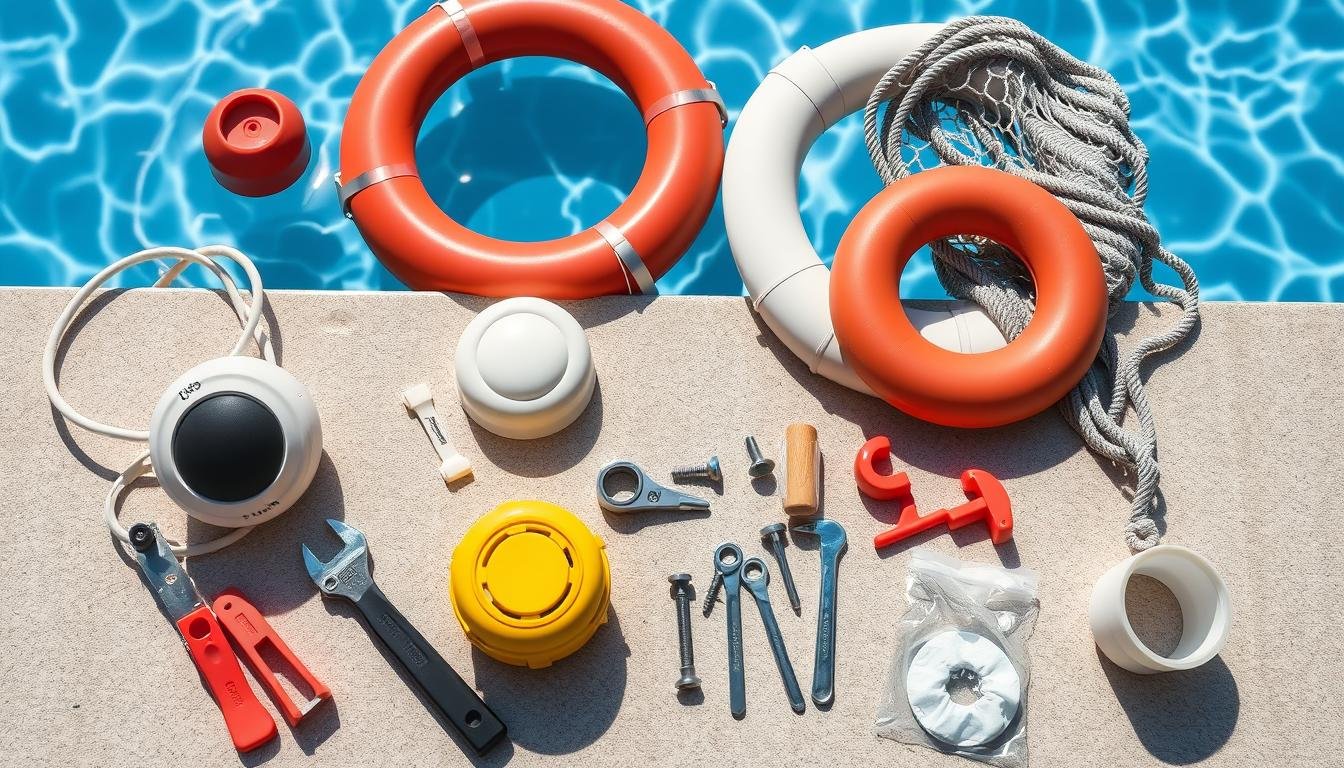In pool ownership and management, prioritizing pool safety is paramount. Whether you’re a residential pool owner or managing a commercial facility, understanding and implementing emergency procedures can significantly enhance the safety of swimmers and minimize risks. This comprehensive guide will delve into the critical aspects of pool safety, focusing on the importance of having a well-defined emergency action plan and the necessary safety measures to ensure a secure pool environment.
Understanding Pool Safety
Pool safety encompasses a broad range of practices and protocols designed to prevent accidents and ensure the well-being of all pool users. Key components include safety regulations, proper lifesaving equipment, and clear safety signage. By adhering to these guidelines, pool owners can create a safe and enjoyable environment for everyone.
The Role of Safety Regulations

Safety regulations are the backbone of any effective pool safety strategy. These regulations outline the minimum standards for pool operation, including requirements for fencing, lifesaving equipment, and emergency contact information. Compliance with these regulations is not only a legal obligation but also a moral responsibility to protect pool users from potential hazards.
For instance, owners must ensure the pool has essential lifesaving equipment such as life rings, reaching poles, and first aid kits. Additionally, safety signage should be prominently displayed, providing clear instructions on emergency procedures and pool rules. This signage is a constant reminder of the importance of safety and helps reinforce safety protocols among pool users.
Implementing an Emergency Action Plan
An emergency action plan (EAP) is a crucial component of pool safety. It outlines the steps to be taken in an emergency, ensuring that pool staff and users are prepared to respond swiftly and effectively. A comprehensive EAP should include:
- Pool staff roles and responsibilities during an emergency.
- Emergency contact information for local emergency services.
- Emergency evacuation procedures and post-emergency meeting details.
- Location and use of lifesaving equipment.
Designating Responsibilities
To ensure the effectiveness of the emergency action plan, it is essential to designate a responsible individual to oversee its implementation. This person should be well-versed in emergency response protocols and capable of training other pool staff members. Regular training sessions and drills can help staff become familiar with the EAP and prepare them to handle emergencies confidently.
Training All Staff Members

Safety training is a vital aspect of preparing pool staff for emergencies. All staff members should undergo comprehensive training that covers emergency response procedures, CPR, and first aid. This training should be ongoing, with regular refresher courses to ensure that staff remain up-to-date with the latest safety protocols.
By investing in safety training, pool owners can create a culture of safety and preparedness, reducing the risk of accidents and enhancing the overall pool safety environment.
The Importance of Clear Signage
Clear and visible safety signage is crucial in communicating important information to pool users. Signs should be strategically placed around the pool area, providing instructions on emergency procedures, pool rules, and the location of lifesaving equipment. Effective signage can help prevent accidents by raising awareness and promoting safe behavior among pool users.
Emergency Contact Information
Displaying emergency contact information is a fundamental aspect of pool safety. This information should be easily accessible and visible to all pool users, ensuring that help can be summoned quickly in an emergency. Prominently displayed contact information demonstrates the pool management’s commitment to safety and encourages shared responsibility among pool-goers.
Pool Safety Equipment

Having the right lifesaving equipment is essential for ensuring the safety of pool users. Pool owners should invest in high-quality equipment and ensure it is easily accessible and well-maintained. Essential pool safety equipment includes:
- Life rings or floats with ropes for easy retrieval.
- Reaching poles to assist swimmers in distress.
- First aid kits to treat minor injuries.
- Automatic external defibrillators (AEDs) for cardiac emergencies.
Regular inspections and maintenance of lifesaving equipment are crucial to ensure that it is in good working condition and ready for use in an emergency.
Compliance and Liability
Compliance with pool safety regulations is a legal requirement and a critical factor in minimizing liability risks. Pool owners who fail to adhere to these regulations may face severe consequences, including fines, legal action, and damage to their reputation. By prioritizing pool safety and ensuring compliance, pool owners can protect themselves and their patrons from potential hazards and liabilities.
Regular Inspections and Audits
Regular inspections and audits of the pool facility are part of maintaining pool safety. These inspections should cover all aspects of the pool environment, including the condition of lifesaving equipment, the adequacy of safety signage, and the effectiveness of the emergency action plan. By identifying and addressing potential issues, pool owners can enhance the overall safety of their facilities.
Creating a Culture of Safety

Promoting a culture of safety is essential for ensuring the long-term success of any pool safety initiative. This involves fostering an environment where safety is a shared responsibility among all pool users. Pool owners and managers should lead by example, demonstrating their commitment to safety through their actions and policies.
Engaging the Community
Engaging the community in pool safety efforts can significantly enhance the effectiveness of safety initiatives. Pool owners should encourage pool users to participate in safety training programs, volunteer as water watchers, and report any safety concerns or hazards they observe. By involving the community, pool owners can create a supportive network prioritizing safety and well-being.
Conclusion
The importance of emergency procedures for pool safety cannot be overstated. By implementing a comprehensive emergency action plan, investing in safety training, and ensuring compliance with safety regulations, pool owners can create a safe and enjoyable environment for all users. Prioritizing pool safety is not only a legal and moral obligation but also a smart investment in long-term success and reputation of any pool facility.
At Sapphire Pool Services, we are committed to helping pool owners maintain the highest standards of safety. Contact us today to learn more about how we can support your pool safety efforts and ensure the well-being of your pool users.
By embracing a proactive approach to pool safety, we can all contribute to a safer and more enjoyable pool experience for everyone.

0 Comments